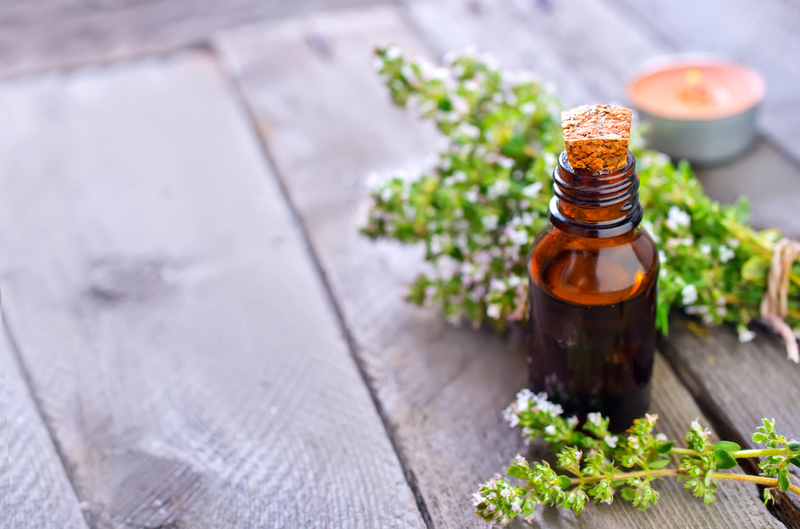Curtain Cleaning Made Easy: A Step-by-Step Guide
Posted on 17/09/2025
Curtain Cleaning Made Easy: A Step-by-Step Guide
Curtains add warmth, style, and privacy to our homes, but over time they attract dust, allergens, pet hair, and stains. Regular curtain cleaning is essential not just for aesthetics but also for maintaining a healthy indoor environment. If you're looking to refresh your drapes and want a detailed process you can follow, you're in the right place. In this comprehensive guide, you'll discover how to clean curtains easily at home, the best methods for different types of drapery, and essential tips for long-lasting results.
Why Regular Curtain Cleaning Is Important
- Enhances Air Quality: Dust, mold, and allergens accumulate on fabric, impacting your home's air and potentially triggering allergies.
- Prolongs Fabric Life: Well-maintained curtains can last for years, protecting your investment.
- Keeps Rooms Bright: Clean drapery looks more vibrant and lets in more natural light.
- Removes Odors: Curtains can absorb cooking smells, pet dander, and cigarette smoke. Regular cleaning eliminates these lingering odors.
Undertaking curtain cleaning at home may seem intimidating, but with the right approach, it's a manageable and even satisfying task.
Before You Begin: Check Curtain Labels & Preparation
Step 1: Read the Cleaning Instructions
Most modern curtains come with a care label. Always check the manufacturer's label for recommended cleaning methods.
- Machine Washable: Most cottons, synthetics, and blends.
- Dry Clean Only: Silks, velvets, and heavily embroidered fabrics.
- Hand Wash: Delicate sheers, lace, and some specialist fabrics.
Step 2: Remove Hardware and Detachable Parts
Detach all curtain hooks, rings, or tie-backs. This prevents damage to both fabric and washing machines during cleaning. Use a vacuum with an upholstery attachment to remove loose dust and cobwebs, focusing on folds and pleats.

Step-by-Step Curtain Cleaning Methods
Step 3: Vacuuming Curtains
Vacuuming draperies is the easiest and safest way to keep them fresh between deep cleans, especially if you have allergy sufferers in the house.
- Attach the brush tool to your vacuum.
- Gently run over the fabric top-to-bottom, front and back.
- Pay attention to: Hems, pleats, and the top where dust settles.
Step 4: Machine-Washable Curtains
If your curtains are labeled as safe for washing machines, proceed as follows:
- Pre-treat stains: Apply a gentle stain remover on spots like food, grease, or ink. Test it first on a hidden section.
- Use a delicate cycle: Cold water prevents shrinking or fading.
- Choose gentle detergent: Avoid bleach, especially on colored drapes.
- Do not overload: Wash curtains alone for best results.
Once washed, hang them up immediately to avoid wrinkles. For thick fabrics, air-dry outdoors if safe, or use a low-heat tumble dryer.
Step 5: Hand-Washing Sheers and Delicate Fabrics
Hand-washing curtains is essential for sheers, lace, and lightly colored fine curtains:
- Fill a tub or basin with lukewarm water and dissolve mild detergent.
- Submerge curtains and gently agitate with your hands. Avoid scrubbing to prevent damage.
- Rinse thoroughly until water runs clear.
- Do not wring: Squeeze gently, then roll curtains in a towel to blot excess moisture.
- Hang immediately to air dry to avoid creasing.
Step 6: Steam Cleaning Curtains
Steam cleaning is a modern method for cleaning heavy drapes, velvet, or when you want to refresh curtains without removing them:
- Fill the steam cleaner with water and heat as directed.
- Test steam on a corner for colorfastness.
- Working from top to bottom, gently pass the cleaner over the fabric.
- Allow to dry fully before rehanging or closing curtains.
Why choose curtain steam cleaning? It eliminates dust mites, bacteria, and tough odors, and fluffs up the nap on velvets.
Step 7: Professional or At-Home Dry Cleaning
Some fabrics must be dry cleaned--especially if they bear the 'dry clean only' label or have interlining, embroidery, or metallic threads.
- Remove hooks and any other hardware.
- Take your drapes to a reputable cleaner, or use at-home dry-clean kits (follow package directions strictly).
- Always test a hidden area if unsure about the chemical reaction of at-home kits.
Step 8: Ironing or Steaming Out Creases
Iron curtains while still slightly damp for best results. Use the correct temperature for fabric type:
- Cotton/Linen: High heat, use steam.
- Polyester/Blends: Low to medium heat.
- Delicates: Place a thin towel between iron and fabric.
Special Curtain Cleaning Tips for Different Fabrics
- Blackout Curtains: Never machine wash. Use vacuuming, spot cleaning with mild soap, or professional cleaning to avoid damaging the blackout lining.
- Sheer Curtains: Hand wash or machine wash in a laundry bag. Hang immediately to avoid wrinkling.
- Heavy Drapes: Vacuum regularly. For deep cleaning, opt for steam cleaning or professional services.
- Velvet Curtains: Only vacuum, steam clean, or dry clean. Never wash or expose to high heat.
How Often Should You Clean Curtains?
To keep your curtains looking fabulous, follow this recommended cleaning frequency:
- Light Vacuuming: Every 1-2 weeks.
- Deep Clean (Wash or Dry Clean): Every 4-6 months.
- Spot Cleaning: As soon as stains occur.
- Steam Cleaning: Every 3-6 months, especially for allergy-prone homes.
Tip: If anyone in the home suffers from allergies or you have pets, consider cleaning curtains more frequently.
Dealing with Common Curtain Stains
- Food Spills: Blot immediately to remove excess. Use a mild soapy solution for spot cleaning.
- Grease: Sprinkle a small amount of cornstarch or talc powder, let sit, then brush off and launder as usual.
- Mold and Mildew: Move curtain outdoors to avoid spreading spores. Brush away loose mold, and treat with a solution of one part vinegar to four parts water. Repeat if necessary, then air dry fully.
- Pet Hair: Use a lint roller or vacuum with an upholstery tool before cleaning.
Preventing Curtain Dirt and Stains
- Open Windows Carefully: Avoid letting dirt and insects settle on fabric.
- Keep Pets Away: Or train them not to rub or sleep against curtain fabric.
- Use Tie-Backs: Keep curtains off the ground to prevent dust and dirt buildup.
- Sun Protection: Prolonged sun exposure can fade and weaken fabric--use lined or UV-resistant curtains in sunny windows.
When to Call Professional Curtain Cleaning Services
Despite your best efforts, there are times when only professional curtain cleaning will do. Call an expert if:
- The curtains are exceptionally large, heavy, or made from delicate/expensive fabrics.
- There are stubborn stains you cannot remove.
- You suspect pest infestation (like moths).
- There's extensive mold or odour reappearance.
Professional cleaners have access to specialized machinery, solvents, and processes for 'like new' results without risking fabric damage.
Curtain Cleaning FAQs
Can you clean curtains without taking them down?
Yes! Vacuuming, spot cleaning, and steam cleaning can refresh curtains without removing them. However, for thorough cleaning, especially with machine or hand washing, it's best to take them down.
Should I iron curtains while they're damp?
Ironing while slightly damp is ideal for cotton, linen, and polyester. Avoid heat on delicate or velvet curtains; use a handheld steamer instead.
What's the best way to prevent wrinkles in curtains after washing?
Hang immediately after the final rinse. Gentle spinning in the washing machine helps remove water without creasing. For extra polish, lightly iron or steam once mostly dry.
Eco-Friendly and Safe Curtain Cleaning Tips
- Use Natural Detergents: Look for plant-based soaps free of harsh chemicals.
- Sun Dry Where Possible: The sun is a natural disinfectant and odor eliminator.
- Homemade Solutions: White vinegar, baking soda, or lemon juice can tackle stains without toxic residue.

Your Easy Curtain Cleaning Checklist
- Check the curtain care label.
- Remove hooks, rings, and hardware.
- Vacuum curtains thoroughly.
- Spot-treat visible stains.
- Wash (hand/machine/steam/dry) as appropriate.
- Dry and iron/steam as needed.
- Rehang, making sure the lining is straight.
Final Thoughts: Keep Your Curtains Beautiful with Routine Care
Curtain cleaning doesn't have to be daunting. With this comprehensive step-by-step guide, you can ensure your drapes remain as inviting as the day you hung them. Regular care, prompt stain treatment, and smart cleaning choices will keep your rooms fresh, healthy, and vibrant all year long. Don't forget, if you're unsure about a specific fabric or stubborn stain, consulting with a professional service is always an option for safe and thorough results.





